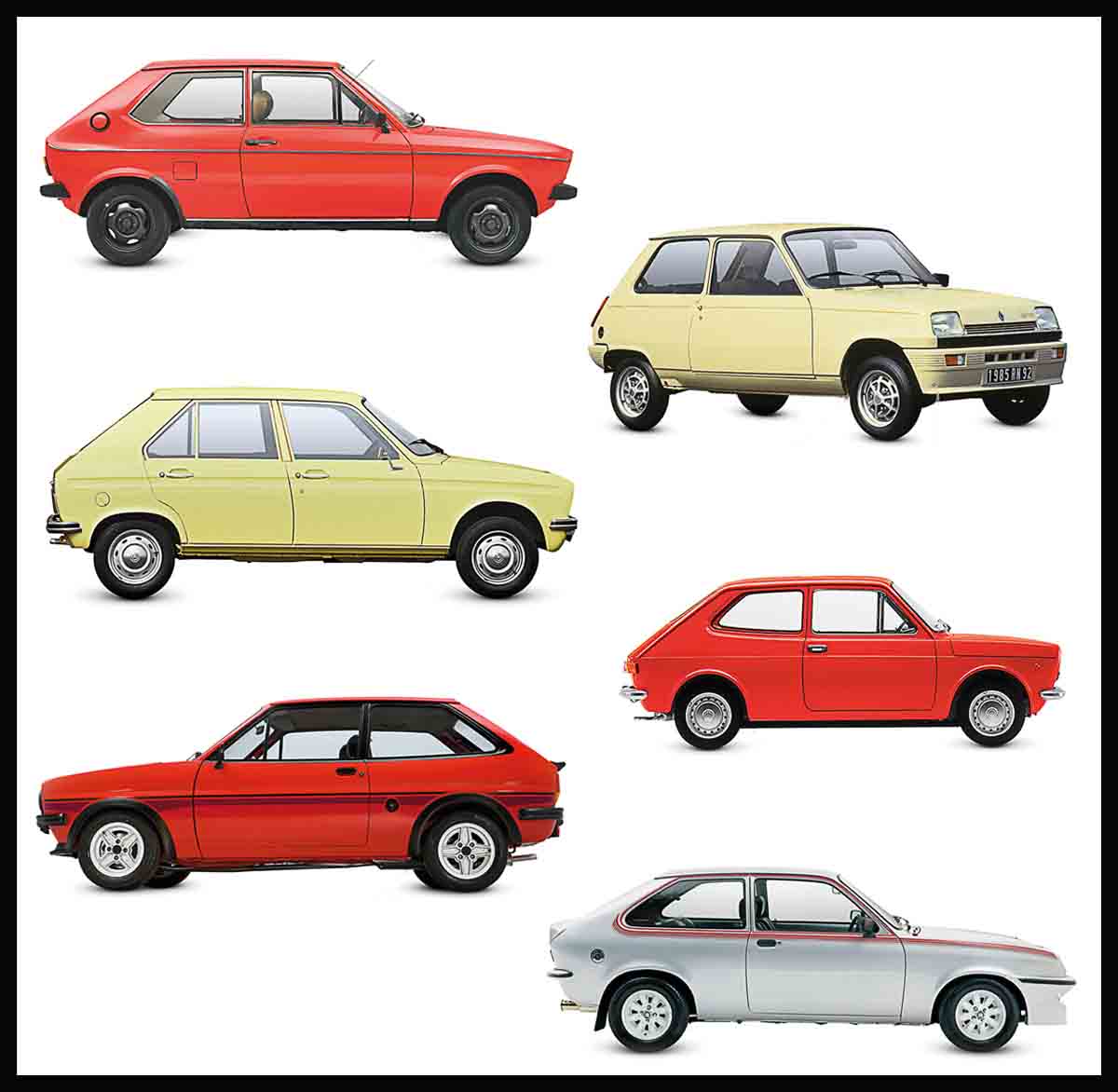
The Superminis
Small cars made great strides in the 1970s. Hatchback bodies were used almost universally, making little cars more useful and adaptable than they had ever been before. Many manufacturers adopted front-wheel drive, which brought with it improvements in space utilization, allowing for more passenger and luggage space within compact overall dimensions. Front-drive also delivered safe, stable handling that was ideal for mainstream motoring. However, some held out against the trend—generally because they were reusing rear-drive platforms left over from previous-generation models that were at least well-suited to pocket-sized performance cars.
Volkswagen Polo, 1975
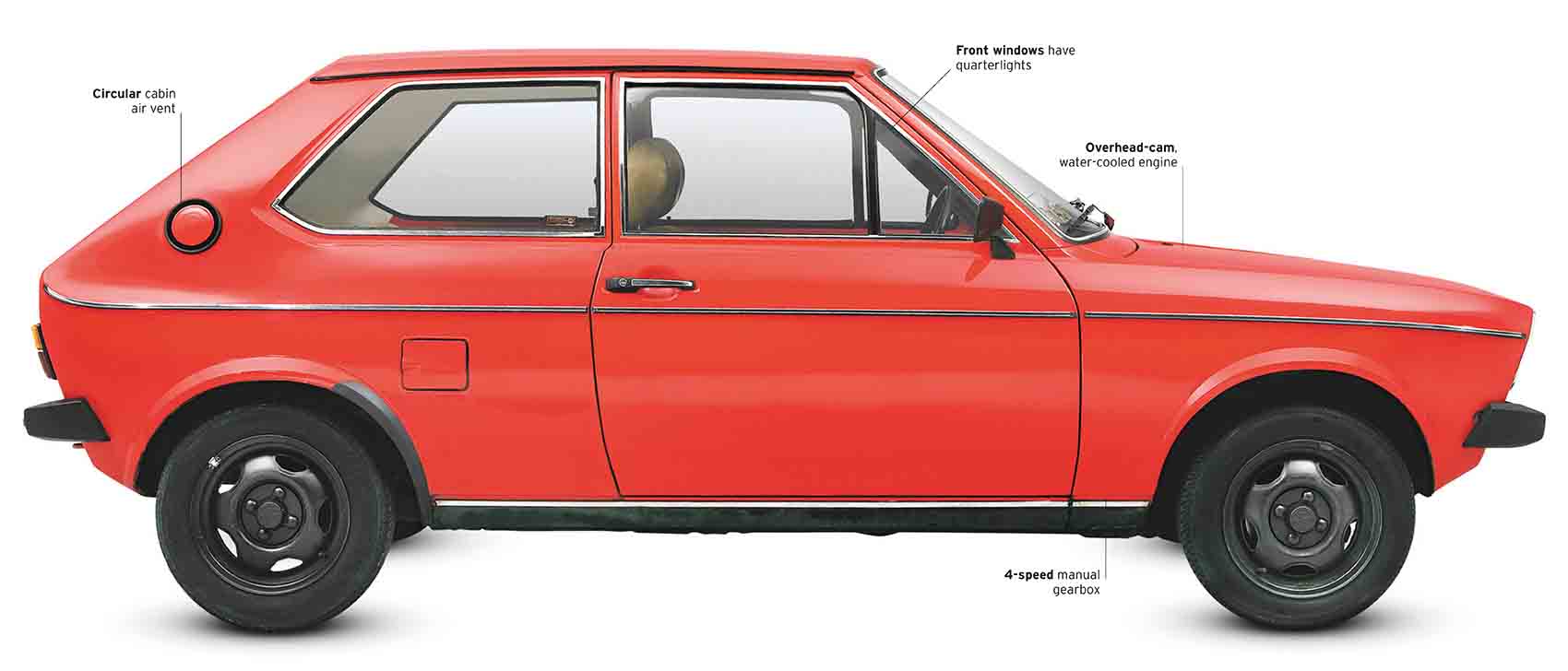
| Origin | Germany |
| Engine | 895 cc, straight-four |
| Top speed | 80 mph (129 km/h) |
VW completed its modern revolution with the Polo, which first appeared as the Audi 50 in 1974. It had a new front engine, all-independent suspension, and front-wheel drive, with engines from 0.9 to 1.3 liters. The Polo and its bigger brother the Golf were big sellers for VW in the 1970s.
Fiat 127, 1971
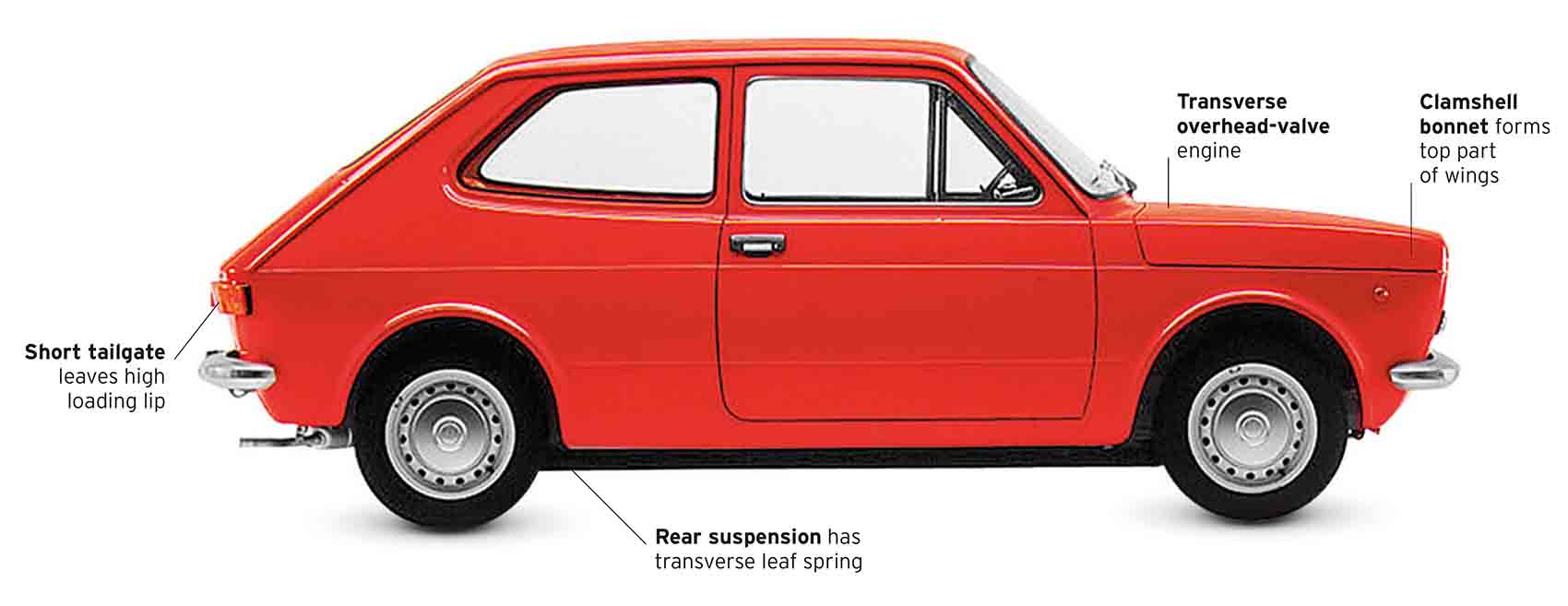
| Origin | Italy |
| Engine | 903 cc, straight-four |
| Top speed | 83 mph (134 km/h) |
Fiat had always been brilliant at well-packaged, quick, small cars and the 127 proved another such success, with sales of 3.7 million. Early cars were booted but a hatchback body soon followed. The 1300 Sport option had a 1,300cc engine and could reach 95mph (153km/h)
Renault 5, 1972
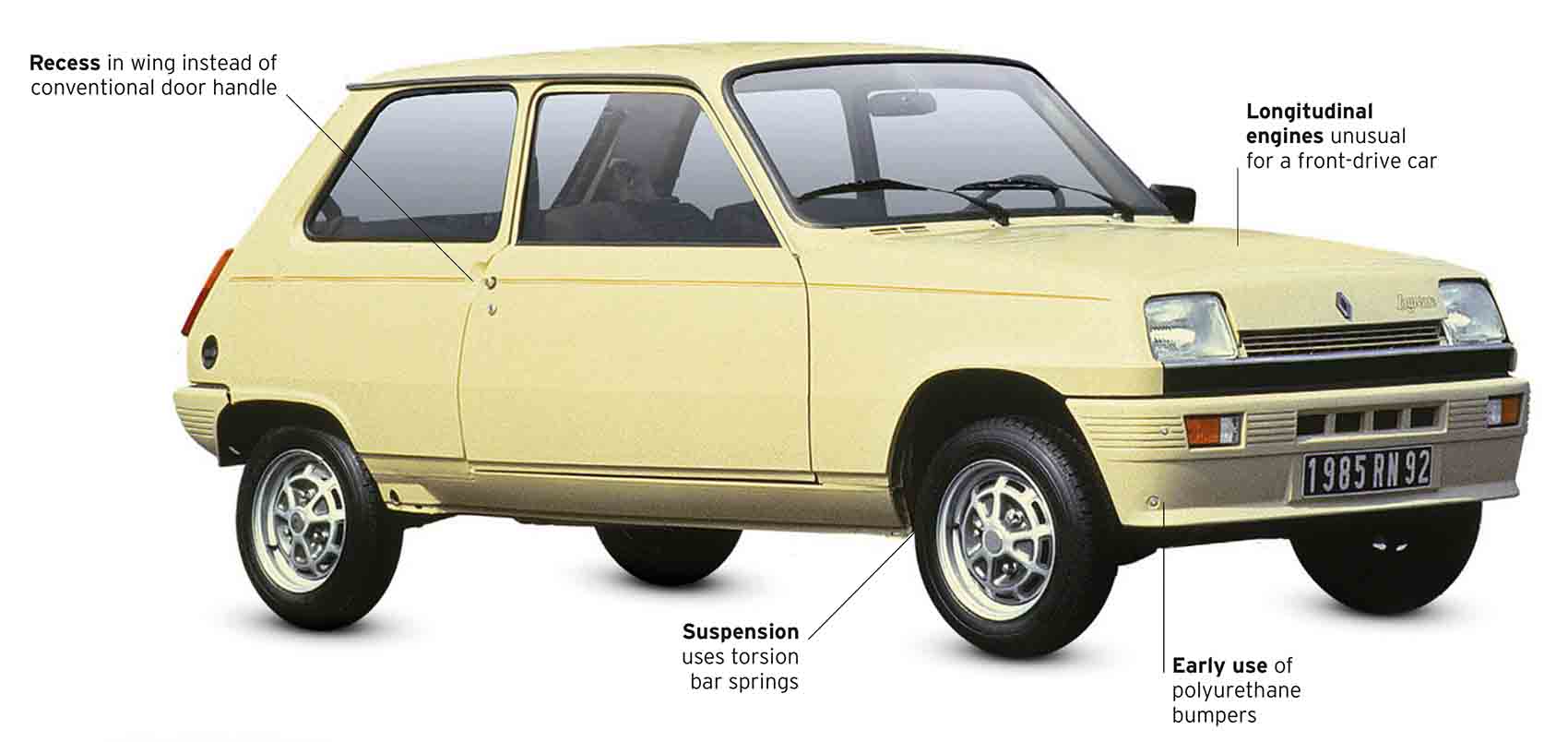
| Origin | France |
| Engine | 956 cc, straight-four |
| Top speed | 86 mph (138 km/h) |
The class-defining and perhaps most popular supermini, the Renault 5 offered a clean and modern three-door body, reasonable prices, six engine choices ranging from 782 to 1,397 cc, and all-independent suspension. The hot Alpine/Gordini model and even hotter mid-engined Turbo added speed and glamour to the range.
Peugeot 104, 1972
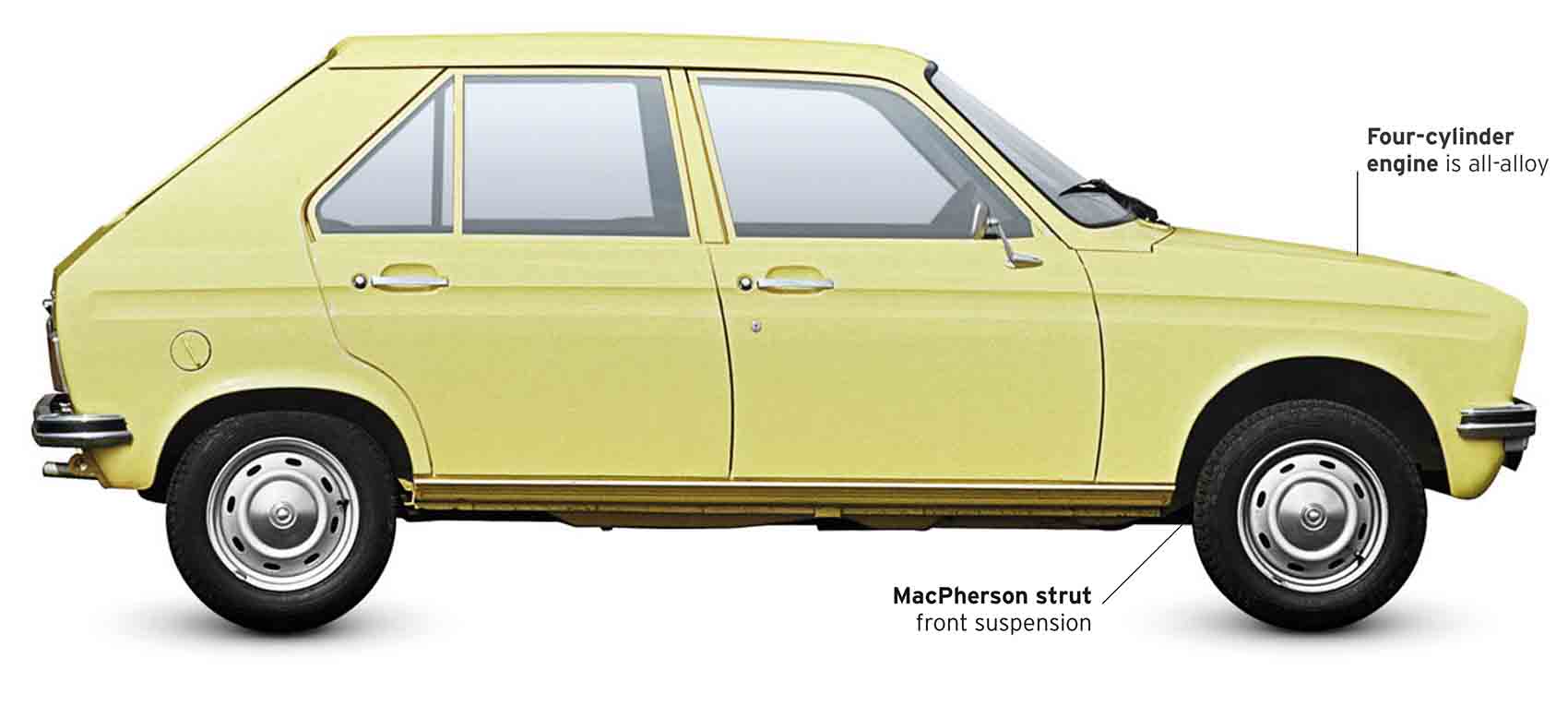
| Origin | France |
| Engine | 954 cc, straight-four |
| Top speed | 84 mph (135 km/h) |
Peugeot’s first supermini was launched as a fastback four-door, then a hatchback five-door. A shorter three-door 104 Coupe followed later. The all-new engine and independent suspension added to its appeal. Pininfarina designed a “Peugette” roadster based on the 104, but it never reached production
Ford Mk l Fiesta, 1976
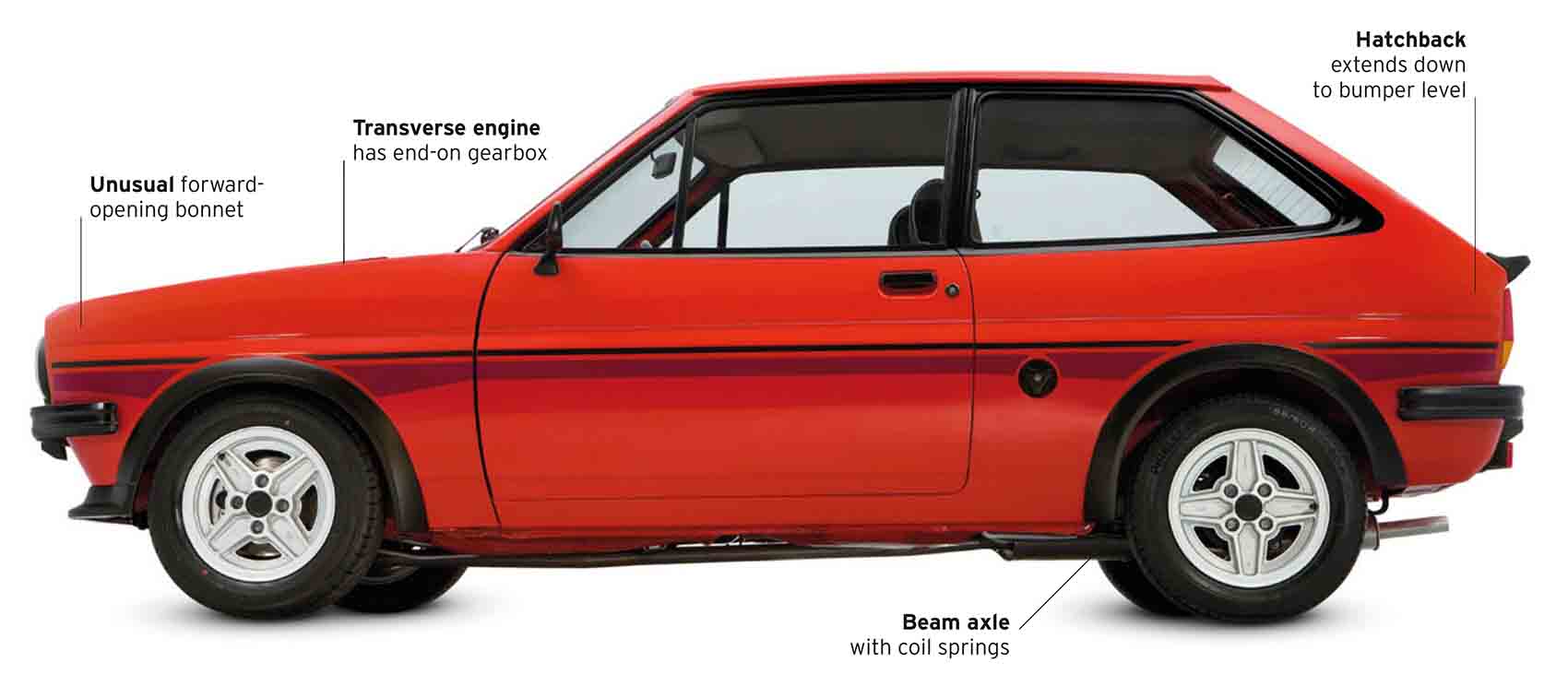
| Origin | Spain |
| Engine | 957 cc, straight-four |
| Top speed | 79 mph (127 km/h) |
Ford’s first supermini for Europe was basic, with only four gears, but it had engines up to 1,600cc and was priced competitively. Sales reached 1.75 million by the end of production in 1983. Fiestas were built in Spain, the UK, and at two German factories. This is the XR2 model.
Vauxhall Chevette HS, 1978
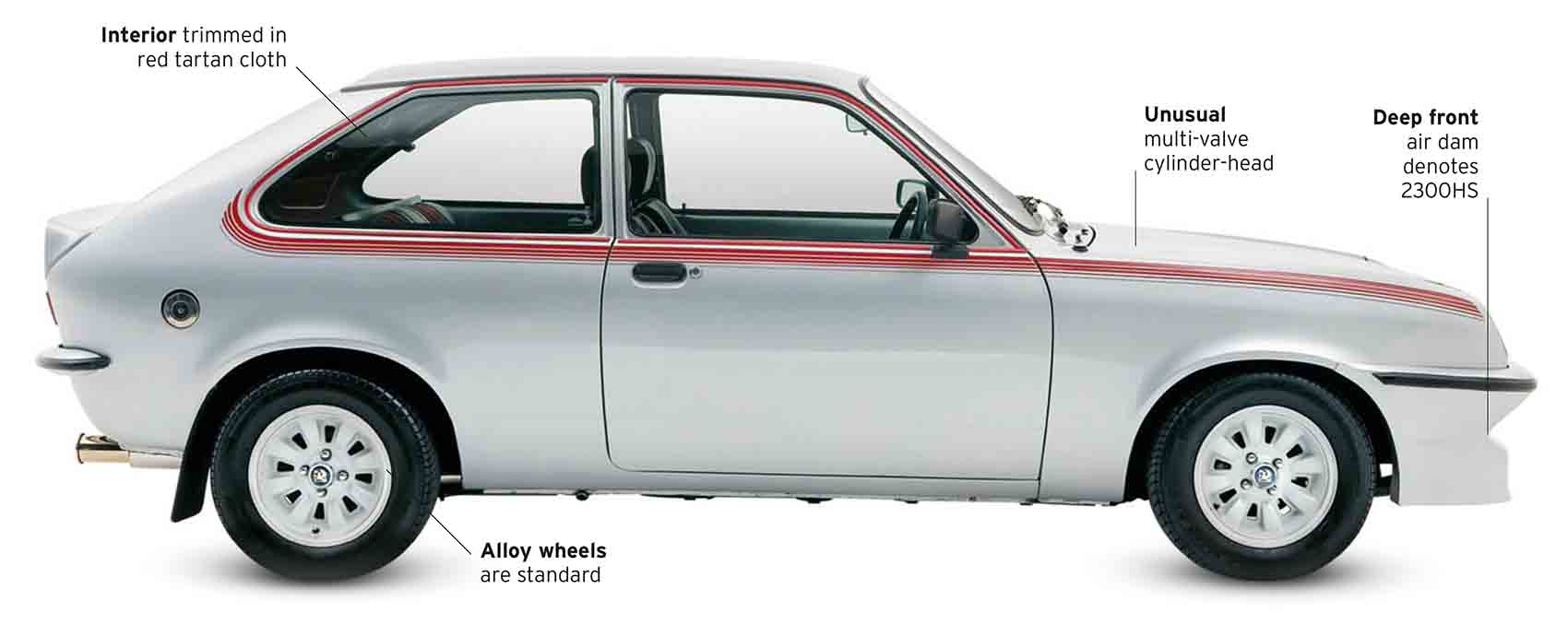
| Origin | UK |
| Engine | 2,279 cc, straight-four |
| Top speed | 115 mph (185 km/h) |
Most Chevettes were pedestrian 1.3-liter hatchbacks and saloons but Vauxhall made a virtue of the old-fashioned, rear-drive layout by creating a high-performance version with a bigger, 16-valve engine. The 2300HS quickly became a serious competitor in rallies, challenging the might of Ford’s Escorts RSs.
It is a quote. The Classic Car Book – The Definitive Visual History 2016




